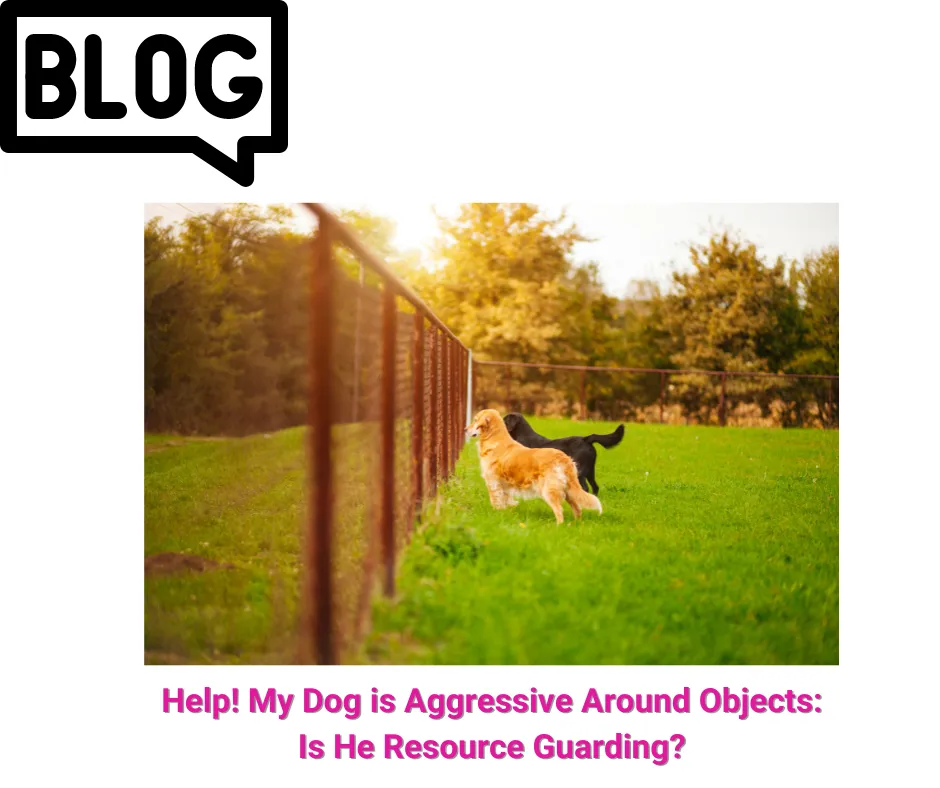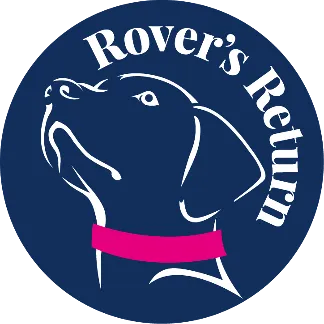Book a FREE 1:1 Assessment Call By Clicking HERE
Specialising In Dog Reactive Behviour
Accredited by APDT, ABTC and UK DOG Behaviour and Training Charter
Qualified and Experienced
Force Free Trainer and Behaviourist
Dog Training Leicestershire Educational Blogs

Help! My Dog is Aggressive Around Objects: Is He Resource Guarding?
Help! My Dog is Aggressive Around Objects: Is He Resource Guarding?
Resource guarding is more common than you think. As a dog owner, it can be quite alarming and frightening to see your usually friendly pet dog suddenly become aggressive and protective around certain objects. Whether it be their favourite toy, protecting their human or food resource guarding is a serious behaviour
This behaviour might seem to come out of nowhere, but it's often rooted in a natural canine instinct known as resource guarding. Understanding this behaviour and how to manage it is crucial for both your safety and your dog's well-being.
What is Resource Guarding?
Resource guarding is a term used to describe aggressive behaviour in dogs that become protective over things they consider valuable. This can include food, toys, beds, or even their favourite human. While some level of resource guarding is natural, it can become problematic if it leads to aggressive behaviours such as growling, snapping, or biting.
What Are Resource Guarding Body Language And Behaviours?
Identifying resource guarding involves observing your dog's behaviour around certain objects. Here are some common signs:
Growling or Snarling: Your dog might growl when someone approaches them while they have a valued item.
Snapping or Biting: In more severe cases, dogs may snap or bite if they feel their resource is threatened.
Tense Body Language: Look for signs of stiffness, a lowered head, or a "hard" stare.
Protective Positioning: Your dog might place themselves between you and the object, or cover the object with their body.
Eating Quickly: Dogs who guard their food may eat more quickly when they feel someone is near.
Why Do Dogs Resource Guard?
Guarding and protective behaviours are rooted in anxiety and negative responses towards events where they feel a level of threat.
Studies have shown that dogs who suffer from pain, itchiness and other health problems can suffer from these behaviours.
Dogs are not natural sharers, when you have a multi-dog household they can fight over food and toys.
When dogs are forced to move or have items taken away from them it can trigger behaviours to communicate their feelings to stop this.
Your dog doesn’t want to dominate or possess all items. Some dogs will guard anything and everything. These dogs may suffer from more deep-rooted anxiety and will likely need professional help.
Resource guarding grows quickly and their perceived movement toward the dog can trigger negative behavioural responses because that is what happened before, and you took an item away.
Some common factors include:
As you move around they become stuck and unable to disengage from the item and arousal builds. You may see stillness and hypervigilance
Often the less obvious communication attempts by the dog are ignored so they have to increase their behaviour to be heard.
Teaching a dog to be optimistic, lowering arousal and building relationships are great ways to reduce guarding.
Is Resource Guarding Always Aggressive?
No resource guarding is not aggression. It is developed through a pessimistic view of the world. The dog may not be interested in the item when they practise the behaviours they grow and spread to other items.
Can dogs be trained out of resource guarding?
Addressing resource guarding requires patience, consistency, and often the guidance of a professional. Here are some steps you can take:
Avoid Punishment: Never punish your dog for guarding behaviour. This can increase their anxiety and worsen their behaviour.
Create Positive Associations: Help your dog associate people approaching their guarded items with positive outcomes. For example, toss a treat near them when you walk by while they have their toy.
Teach "drop it" and "leave it" can be very helpful. Train these commands using positive reinforcement.
Don’t allow the rehearsal of the behaviour, keep items that your dog guards away from them
Trade Up: Practice trading the guarded object for something of higher value, like a favourite treat, to teach your dog that giving up resources can lead to better things. But be careful when training this. If your dog has severe anxiety this can make it worse.
Consult a Professional: If the guarding behaviour is severe, seek help from a certified dog trainer or a veterinary behaviourist. They can provide a tailored plan to address the issue safely.
How To Stop Resource Guarding With Other Dogs
This can be tricky as multi-dog households feed off each other's energy. One dog may warn the other to keep away, but the other dog doesn’t like this and a fight starts.
Dogs need time and their own space to play and interact with you and eat.
Time to rest away from the household and other dogs is essential.
Management of toys, food and space is necessary for them not to practise the behaviours.
If this is done early on when you first get your dogs it will become a way of life and easy to implement. You may need help with older, established dogs to set manageable boundaries, lower arousal and change negative situations.
Preventing Resource Guarding
Preventing resource guarding starts with early training and socialisation:
Don’t take things away from your dog, they don’t understand why and can
Teach Generosity: Regularly practice trading objects with your dog to teach them that giving up something isn’t always a loss.
Provide Enrichment: Make sure your dog has plenty of mental and physical stimulation to reduce anxiety and frustration.
Conclusion
Resource guarding can be a challenging behaviour to manage, but with the right approach, it's possible to help your dog feel more secure and less aggressive around their valued items. Remember, patience and positive reinforcement are key. If you're struggling, don't hesitate to seek professional help to ensure both your safety and your dog's happiness.
If you've experienced resource guarding with your dog, what strategies have worked for you? Share your experiences and tips in the comments below!
If you need an effective program to reduce your dog reactive, behaviour around people,dogs or valuable items then get in touch and book your free call
Highly Qualified Behaviourist
Accredited by APDT, ABTC and UK DOG Behaviour and Training Charter
Accredited Scentwork Instructor
Force Free Trainer and Behaviour
Force Free Trainer and Behaviour
Accredited Scentwork Instructor
Accredited by APDT, ABTC and UK DOG Behaviour and Training Charter
Highly Qualified Behaviourist
Contact Us
Sam: 07725 802995
You can contact us via Live Chat button at the bottom of the screen or the contact box to the right.
You can also book one of our services online using the View Dates buttons under the service you require.
© 2023 by Rovers Return Dog Trainers Academy - Force Free Dog Training Lutterworth, Broughton Astley, Leicestershire, Hinckley, Nuneaton, Stoney Stanton, South Kilworth, Ullesthorpe
Privacy Policy | Terms and Conditions | Terms and Conditions of Services | Sitemap




Facebook
Instagram
X
LinkedIn
Youtube
TikTok